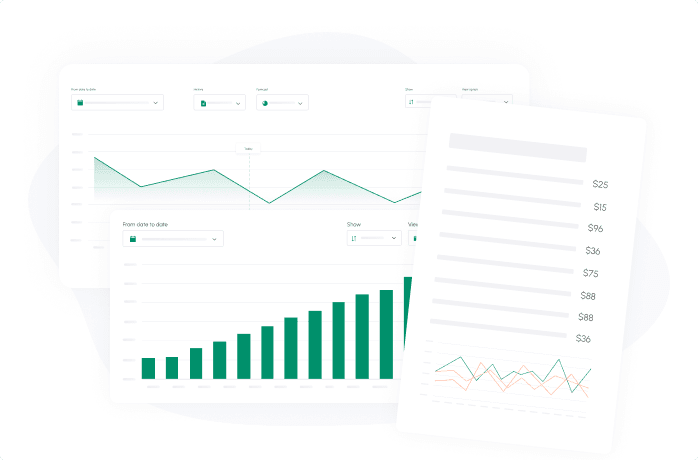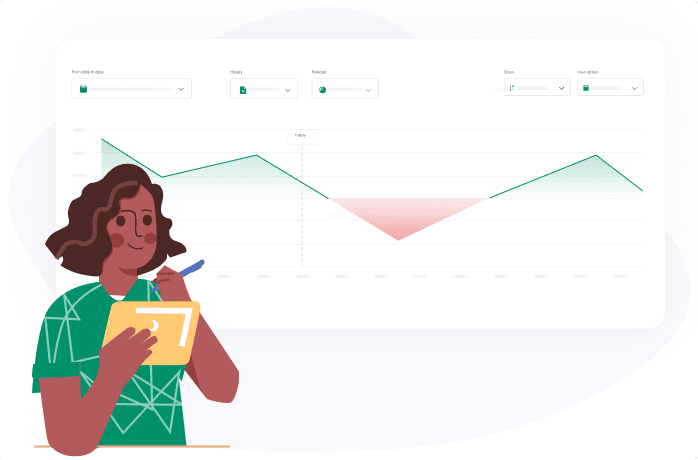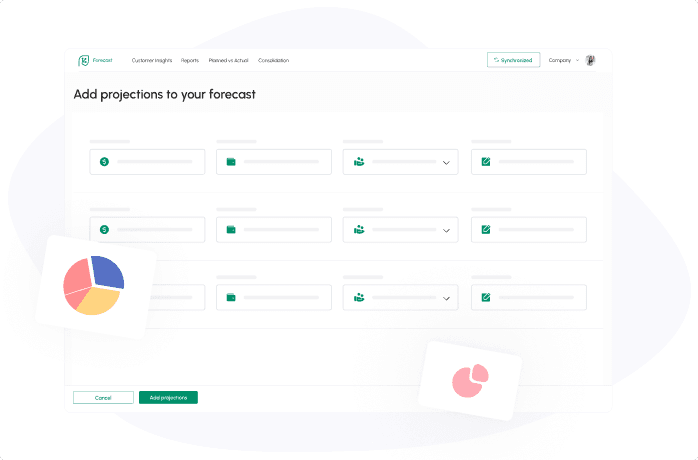

Interim invoices don’t fit into the standard invoice definition. They serve a unique purpose and are only used for certain types of projects or purchases. But they offer many benefits for all parties and are relatively easy to implement.
Let’s take a closer look at what interim invoices are, use-case examples and why they’re useful.
What is an Interim Invoice?
An interim invoice is also called a progress invoice. Essentially, it’s an invoice for a partial amount of an order or project.
What exactly is the partial payment meaning here?
The official partial payment definition is: A payment less than the full amount that is due.
If you take on a large project, you may bill the client at certain milestones, every month, or at progress points (25%, 50%, 75%, etc.).
There are many cases where interim invoices are used.
Examples of Interim Invoice Usage
Now that you understand the interim invoice definition, let’s look at some use-case examples. Keep in mind that one company’s interim billing meaning may be different from another. Companies within each of these industries will have their own stages or progress points in which invoices are sent.
1. Construction Industry
Progress invoicing is very common in the construction industry. It ensures that the construction business has the funds to start and continue the project, and the client isn’t left with a huge bill at the end of the project.
In the construction industry, interim invoicing may look like this:
- An initial deposit is made.
- Each time the construction company completes a phase in the project, an invoice is sent.
- Work resumes once the invoice is paid.
- The pattern continues until the project is complete.
The contract will define each phase, so both parties know when payments will need to be made.
2. Freelance Services
When freelancers provide interim service meaning that they provide their services in milestones or chunks, they will send out progress invoices.
For example, freelancers that offer web development services will typically use interim invoicing. While every freelancer has their own method, web development is often split into three stages:
- Design
- Front-end development
- Back-end development
Invoices are typically sent at the start of each phase.
3. Consultancy Firms
When consultancy firms work on long-term engagements or projects, they may send out interim invoices.
Typically, partial payments are made based on milestones or achieving a certain level of progress.
The Implementation Process
Implementing interim invoicing is easier than you think. Here’s how it works:
1. Setting Up Interim Billing
The first step is to set up interim billing on your accounting software. Most modern accounting solutions offer the option for interim billing, which will save you time.
2. Establishing Invoice Milestones
The next step is to establish your interim invoice definition for each milestone. Milestones should be defined in your contract and discussed with your client.
Make sure that you define the deliverables for each milestone, so both parties are on the same page and know what to expect.
3. Communicating with Clients
The interim invoice payment meaning may differ between you and your clients. For example, for you, it means maintaining a healthy cash flow and reducing your risks along the way. However, clients will view your invoicing practice as a way to:
- Know where you are in the fulfillment process
- Receive milestone updates
Your invoice can provide in-depth information to your clients and customers, improving your communication with your clients.
Be upfront and honest when implementing interim invoices. Explain to the customer what the funds will be used for and what milestones must be met before the second payment is triggered.
4. Software Solutions
An interim payment is like any other invoice in the sense that you can automate them using software. You should have a software solution that ties into your project management tools that allow you to:
- Send interim invoices
- Outline milestones that are met
- List milestones until completion or the next invoice
- Remain transparent with clients on how much of the invoice has been paid
You can and should create interim invoices using the same invoicing solutions that you use for normal invoices. We recommend automating these processes to the best of your abilities with:
- Templating
- Invoice reminders
- Invoice sending
Automating your invoices and reminders will empower your business because these two practices increase your cash flow on their own.
Benefits of Interim Invoices
As you know, the invoiced definition above is used in service businesses quite often. For example, a contractor redoing your bathroom may ask to be paid in parts because they need to maintain cash flow and pay for supplies.
Builders will also use these forms of progressive invoicing.
Large contracts or long-term agreements in any business can benefit from interim invoices. Why? They offer numerous advantages.
1. Improved Cash Flow
A partial invoice works for all parties. You can safeguard your business and improve cash flow by asking for multiple, small payments based on project or fulfillment milestones. Imagine that you’re a manufacturer and a customer wants to order 10,000 products that you must custom create for them.
You may decide to invoice the customer once, but this is a 4-month project that requires:
- 10 employees to work on
- $10,000 in inventory
Your business is making a significant investment in larger projects of this magnitude. Breaking down payments into interim invoices will empower your business by improving your cash flow so that you’re not operating at a loss while fulfillment is processing.
2. Enhanced Transparency
Interim invoices also create transparency between your business and the buyer. For example, if you need 25% upfront for a project, it allows the buyer to understand the initial costs of the project.
If 25% is also due at the 50% completion mark, it will signal to the buyer how far into the fulfillment process you’re in. Transparency also offers security in knowing:
- Your buyer is paying for the project costs in increments that allow you to continue making payroll
- The buyer benefits from knowing where you’re at in the fulfillment process
When larger purchases are made, it makes sense for partial invoices to be sent and paid to increase transparency. Project management efficiency also increases when using interim invoices.
3. Efficient Project Management
Project management is all about managing your resources most effectively. You cannot be effective with management if you’re:
- Struggling to maintain cash flow
- Waiting until the end of a contract for payment
- Tying massive resources to one agreement
Progressive invoices are powerful tools that project managers love because they allow you to:
- Set aside money for payroll
- Pay for inventory upfront
- Stay out of debt during a project
Business owners should work with project managers to determine when interim invoices make the most sense. Perhaps a two-week project doesn’t require partial payment, but if any project takes two months or is over a certain dollar value, partial invoices may be triggered.
Conclusion
Businesses that risk potential payment issues or want to lower operational risks can begin using interim invoices. Financial difficulties in business often revolve around a lack of cash flow, but you can avoid these issues with partial invoices.
Integrating these types of invoices into your operations will also increase transparency and allow you to increase project management efficiency.
Related posts:
You may be interested:
New:













